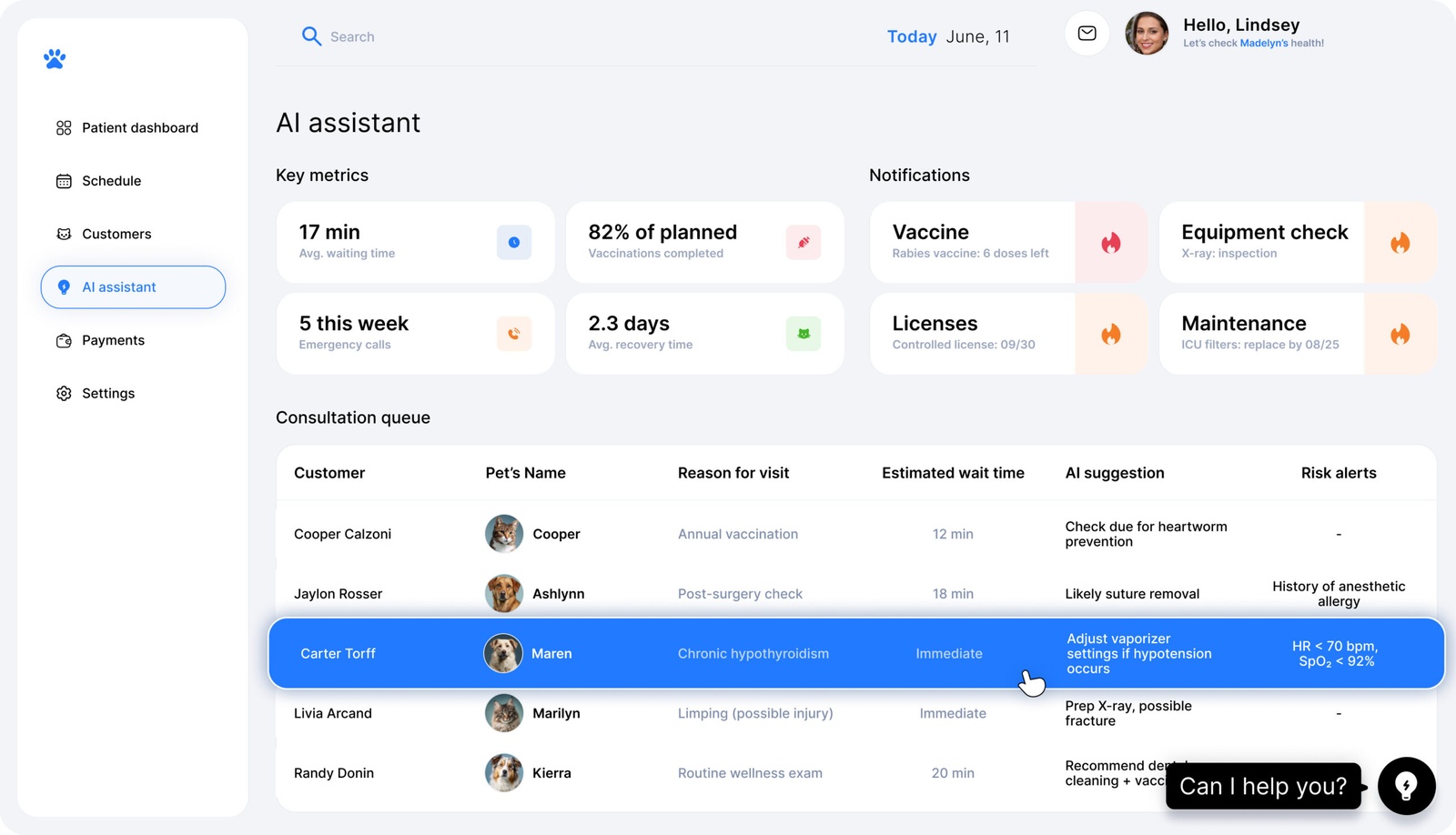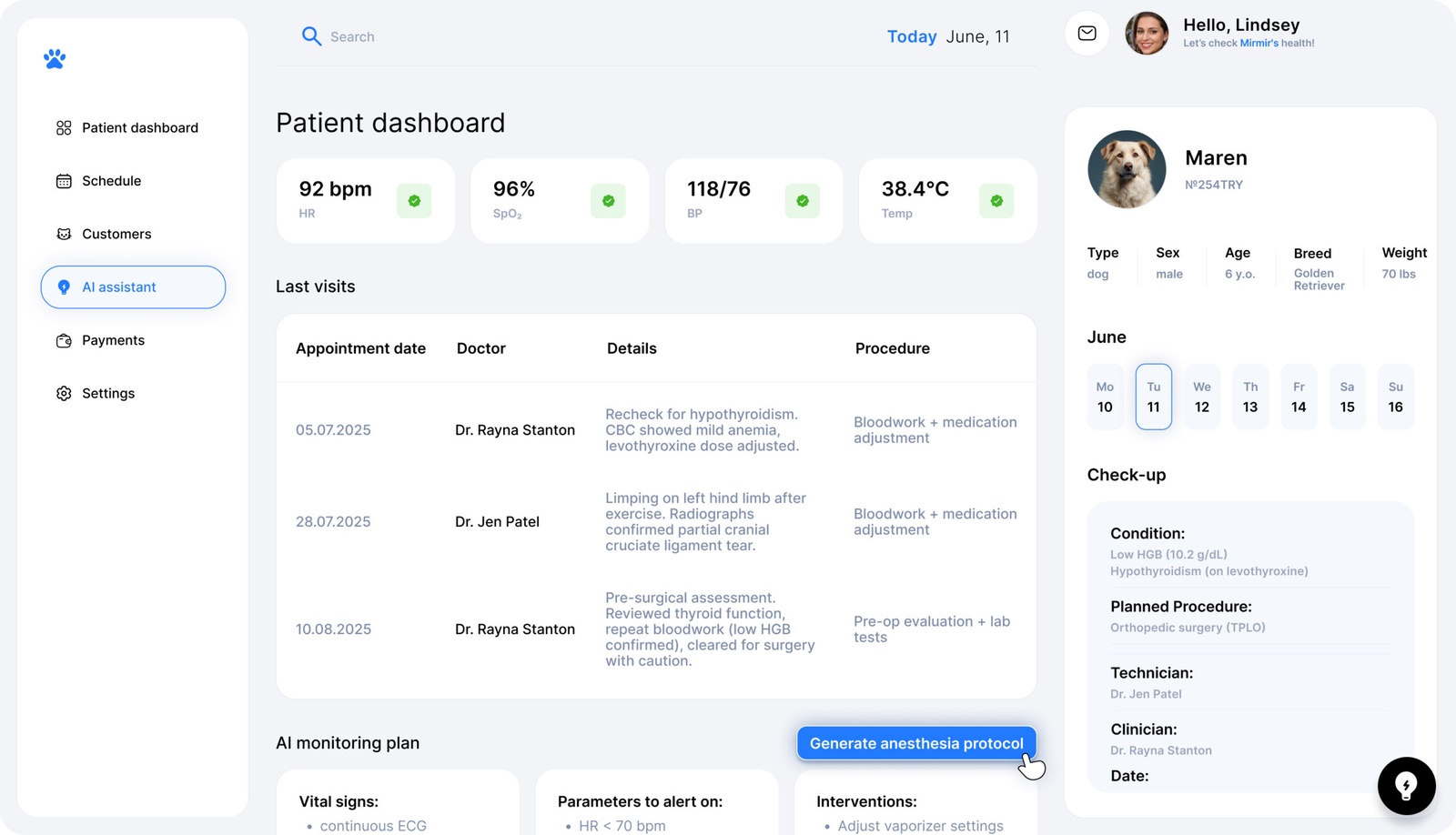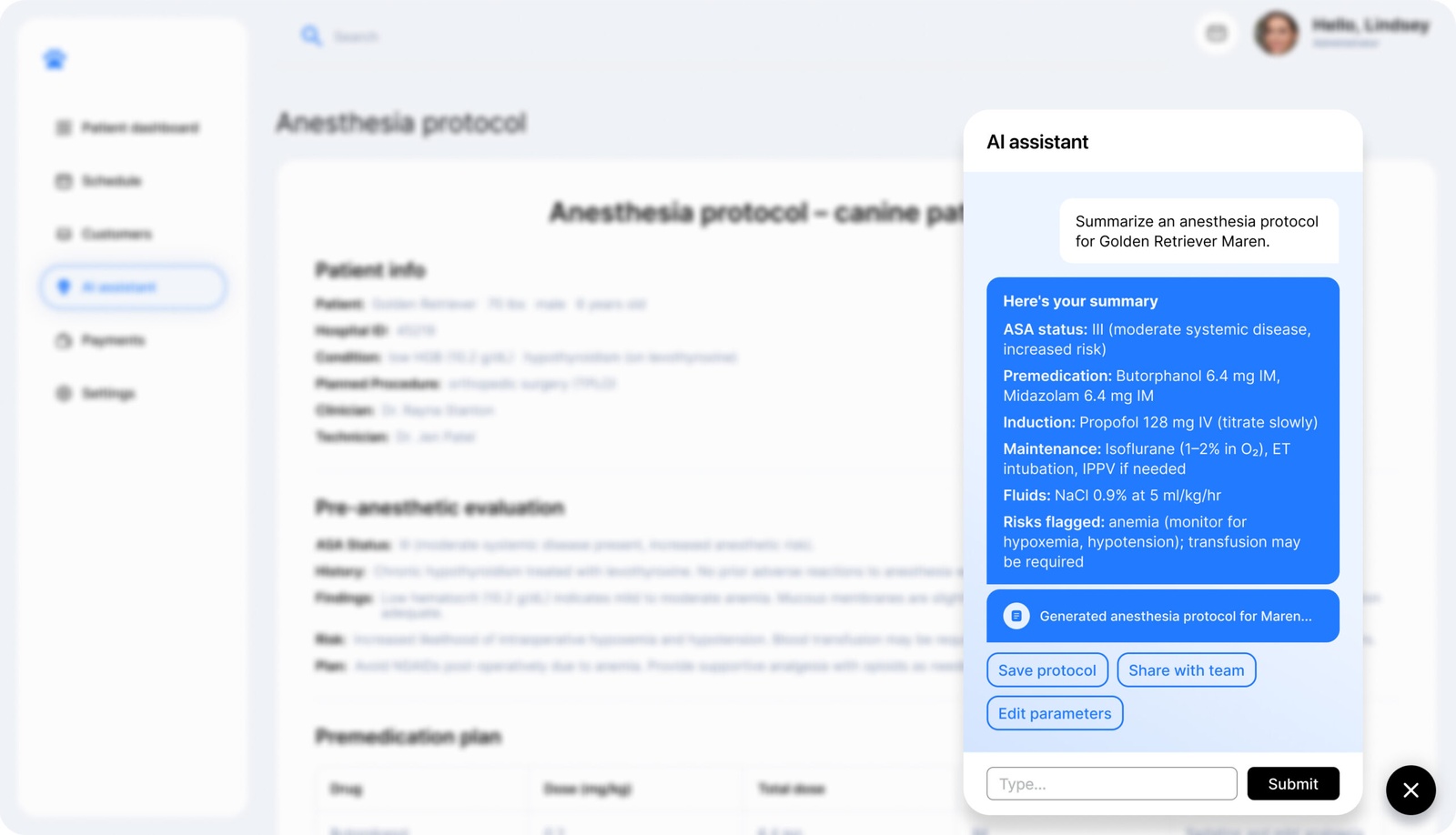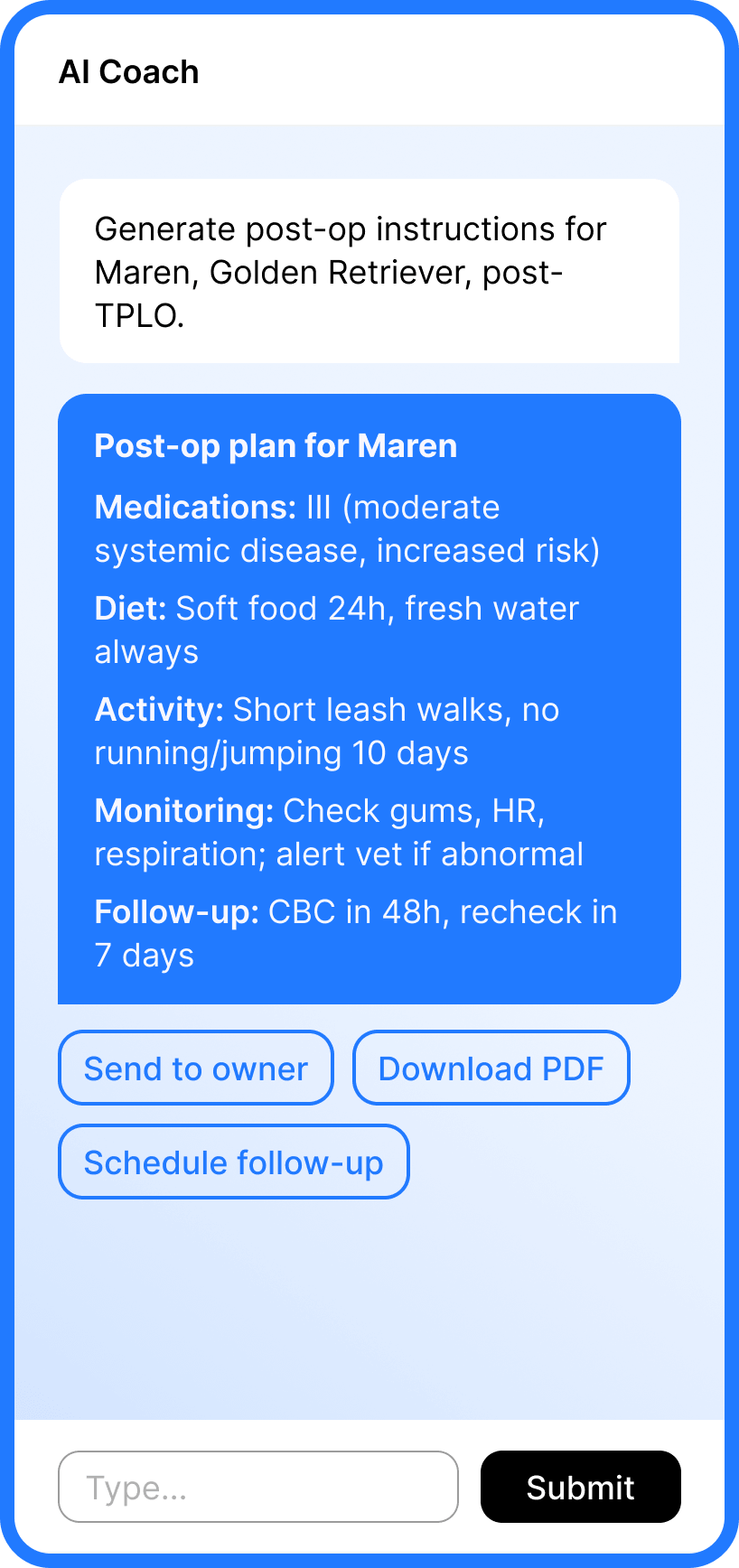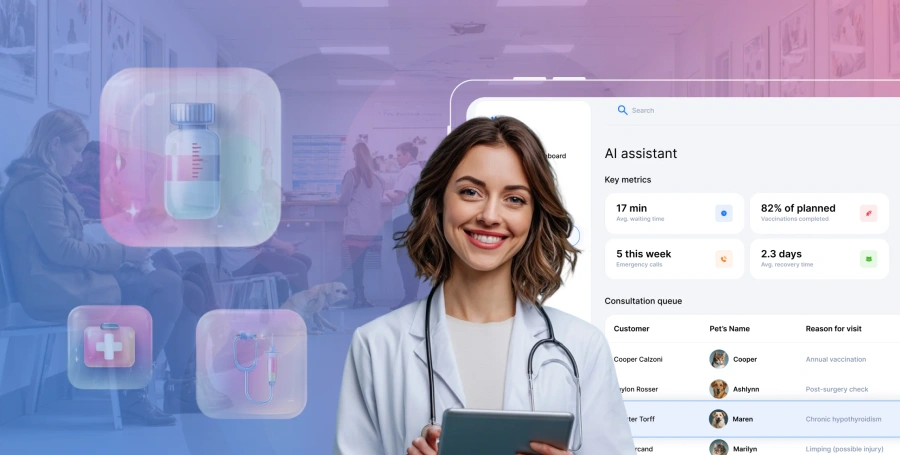
AI assistant for safer surgeries in vet clinics
A reputable U.S.-based veterinary clinic network offering comprehensive animal healthcare services across general surgery, preventive care, dental procedures, and emergency treatment.
USA
Veterinary
Since 2022

Key achievements
| 90% | and more accuracy in anesthesia dosage calculations |
| 30% | reduction in surgical prep time |
| 24% | increase in vet team productivity |
Project scope
To build the smart vet assistant, available on both desktop and mobile, we took a phased approach:
Discovery phase
- Analyzed practitioner workflows, patient data flows, and operational bottlenecks through audits and interviews.
- Mapped accuracy risks in anesthesia and inefficiencies in cross-team coordination into priority use cases.
Data science
- Defined AI applications across case management, anesthesia dosing, vitals monitoring, triage, and workflow optimization.
- Built lightweight models for mobile-side calculations and larger predictive/monitoring models trained on AWS SageMaker.
- Training data included vitals, species, medication protocols, and historical case outcomes.
Frontend & UX
- Embedded AI features into a mobile app for vets/nurses and two admin panels for managers and platform admins.
- Designed smart templates, suggestion widgets, and monitoring alerts to blend seamlessly into clinical routines.
Backend & cloud infrastructure
- Deployed as a cloud-native service on AWS using ECS Fargate for elastic scaling, RDS for database reliability, and CloudFront for fast global access.
- Blue-green deployments ensured safe, continuous updates.
- Staged rollout to high-usage clinics with feedback loops for iterative improvements in accuracy and operational efficiency.
Tools & Technologies
Amazon SageMaker
Elasticsearch
GPT-4
LlamaIndex
PostgreSQL
Python
React
TensorFlow
TypeScript
From prep to post-op – make every step smarter with AI
Let’s shape the future of animal care together!
